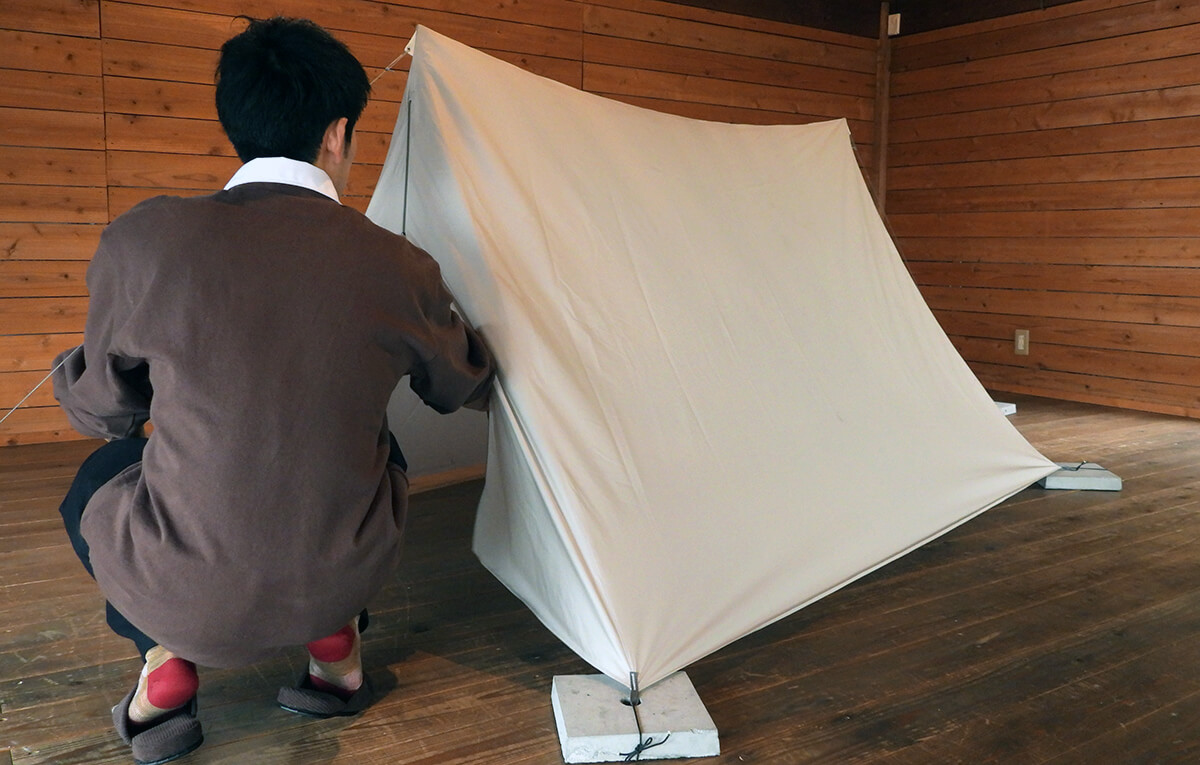
[Backpacking Shelter] CLASS EXPOSITIONS and Kitamura Goshi [Garage Brand Visit]
Now, this is a story about the garage brand CLASS EXPOSITIONS, which has been delivering a record of two days in two nights up until last time.
Contents of the first part
And the second part
The third episode, which continues, will return to the atelier as announced, and explore CLASS EXPOSITIONS, Backpacking Shelter, and Kitamura-san.
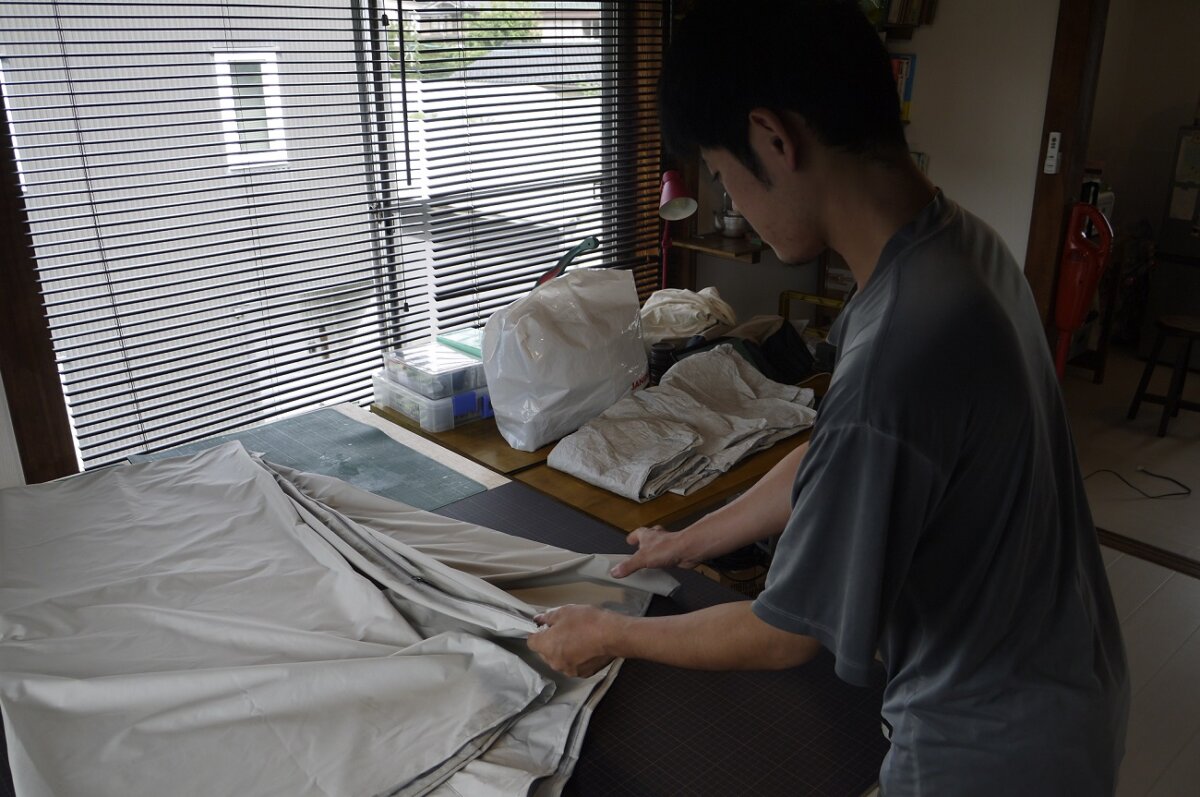
Kitamura checks the shelter after returning to the Atelier.
In this writing, I have been asked to hear a long interview and what CLASS EXPOSITIONS is thinking, so here's what CLASS EXPOSITIONS is about? What is Backpacking Shelter? And I would like to unravel what Kitamura is thinking.
table of contents
- What I want to express as CLASS EXPOSITIONS
- CLASS EXPOSITIONS is a design-focused subject
- A product called Backpacking Shelter
- Notes on Backpacking Shelter as Mr. Kitamura answers and the author's supplements
- The origin of the name CLASS EXPOSITIONS
- Starting shelter production and the journey to Backpacking Shelter
- The beginning of Kitamura-san and CLASS EXPOSITIONS.
What I want to express as CLASS EXPOSITIONS
"The products that have been announced at this time are the shelter called Backpacking Shelter, carbon poles, and mountaineering gear. However, I would like to not simply fit within the framework of an outdoor equipment manufacturer, but instead work on a variety of creativity. The main focus of this activity is designing and manufacturing."
Yes, the first thing to keep in mind is that CLASS EXPOSITIONS is not just a brand that produces outdoor gear. It is a place for design expression. And the work that was created now was a shelter called Backpacking Shelter.
CLASS EXPOSITIONS is a design-focused subject
"The method used in CLASS EXPOSITIONS is one project and one product. I found it difficult to put together the things that came to my mind after doing this so far into one brand.
And I have decided to adopt the style of each project as an independent product so that you can challenge new projects without any restrictions."
"And when you make something, nature is always in your mind. Things that exist in nature are wonderful. One of the good things about climbing a mountain is that you can be exposed to the beauty of nature and experience being united with it. As an artist, I want to imitate that nature. I think the result of this naturally in the sense of randomness is beautiful. Even if I think about it in the process, it will become refined and unnecessary things will be removed. Or, I would like to make sure that things that have been chosen unconsciously are similar to the beauty of the sculpture that exists in nature, and that I can also find them in the things I create."
"I think design is a kind of spiritual activity. So I feel that it is not just a material task of creating something, but rather a movement of thinking. I am not a Zen monk, but I feel like I am experiencing Zen through design. If I do
this in all of my life, I will be able to master Zen, but I feel that it is difficult and not just formal. But in a certain field of my life, I think it would be a little easier to tackle.
In my case, I think it's manufacturing and hiking. ”
Even though he is young, Kitamura has had a rather sought-after thoughts, and he seems to have a certain ideological view of something.
A product called Backpacking Shelter
"In this context, the first thing we commercialized was a shelter. Shelters can express the beauty of 'as a sculpture' and people can 'use' it. It's a sculpture that can be used, so to speak. The original theme was 'habitable installations' (living space sculptures).'
Users use it to express themselves and engage in creative activities. There is such a concept.
Some of my favorite words are:
Whatever you do can be art, not always putting paint on canvas It's not just about drawing on a canvas."
My interpretation is that having a creative mind about what you do will help you reach the realm of art. It's not necessarily about painting, but rather do something with personality and assertion. That means it can be called art. ”
"And I would like to emphasize that Backpacking Shelter has more value than just a tool. As I have already mentioned, it is about the meaning of having artistry and use. If you just use it according to your purpose, it is just a tool. However, there is something that comes from the added value of having artistry.
It is a means for the user to express himself. I think it is wonderful that people have creativity and personality in doing things. From what they do, they emit some kind of message or power. In order to achieve this, the product expresses the inner self of a person is a very important factor.
I use this concept to mountain climbing, hiking, and backpacking, which can be called a variety of ways, but it can be used to carry out the activities of packing food, clothing, shelter and roaming the world. This is what I think Backpacking is a very important factor. This is a concept that we want to express through the product "Shelter".
In other words, walking and traveling around the mountains while thinking and feeling something is also a self-expression, and creating a Backpacking Shelter as a symbol of that activity."
Backpacking Shelter is not just a tool or tool! In fact, this is packed with Kitamura's thoughts.
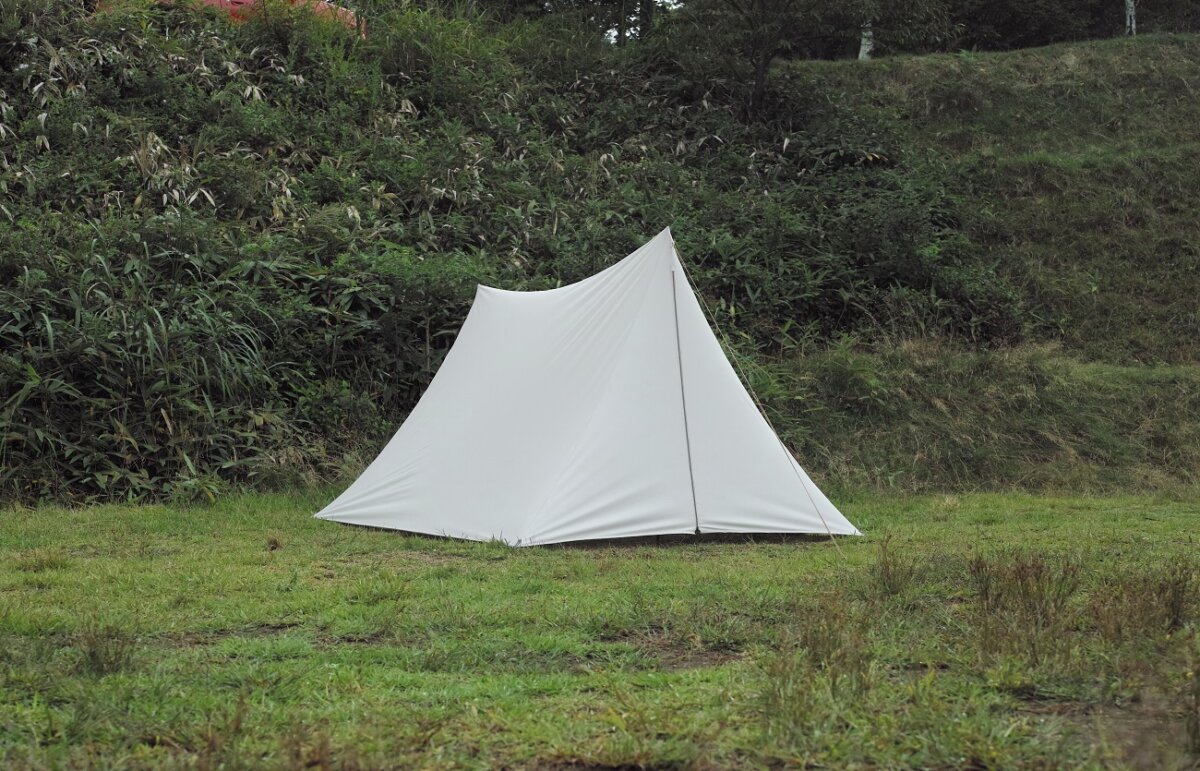
Notes on Backpacking Shelter as Mr. Kitamura answers and the author's supplements
"After we have explained everything about Backpacking Shelter at events, we will explain the design in response to what people have questions ask us about. The product description is also written on our website, so we hope you will take a look at that as well."
How do you deal with flooding? Do you have an inner tent?
"In situations where it is raining, measures such as placing a shelter firmly on the ground and placing stones around it to prevent rainwater from splashing. Furthermore, the characteristics of floorless shelters are lightweight and can increase speed of action. This means that if you use them in a mountain hiking area, you can arrive at the tent site as early as possible and get ahead of the point where water is not likely to accumulate. In other words, you will need to make plans and act on the characteristics of the tools you use."
I actually used it even in a certain amount of mud and ten rainfalls in the middle of the night, but it was just normal and I didn't have to pay particular attention to rain, so even if I didn't pay particular attention to preventing the rain, it didn't get into a bad situation, making it comfortable to use.
Since it is made of three layers of fabric, is it less likely to condense?
"We have created shelters using a variety of materials and have measured condensation in various situations. In conclusion, no matter how breathable the fabric is, condensation occurs when it occurs. The reason is that condensation occurs due to temperature differences. The moisture permeability data for waterproof and breathable materials is measured beforehand by setting the environment so that moisture can move. The moisture that air can hold is determined according to the temperature, and in mountainous areas, especially in mountainous areas, the surroundings are gas and the temperature is low, making it a high relative humidity environment.
Under these circumstances, even if the temperature difference between the inside and outside the shelter is 1 to 2°C, the dew point (temperature that causes condensation) can reach the dew point. Also, even if breathable materials are used, if the tent is set up in the mist, where will the moisture inside the tent escape? That should not be found anywhere, but the three-layer fabric also feels less likely to condense.
I believe there are two reasons: First, the moisture permeability allows some moisture to escape. Furthermore, the absence of air reduces temperature differences between the inside and outside.
The second important thing is the lining of the third layer inside of the third layer. Some water adsorbs this area, so condensation is avoided from becoming water droplets. As a result, condensation does not drip or fall off, and it feels less likely to occur. ”
As mentioned in the previous article, this is definitely not easy to condense, which is a characteristic of single wall shelters. However, the current top section has no seam sealing, so if it is hit by the rain for a long time, water will enter from there, but as I have mentioned that it will flow cleanly downwards, so it depends on the user how you view this. And there is a possibility that specifications will change in the future.
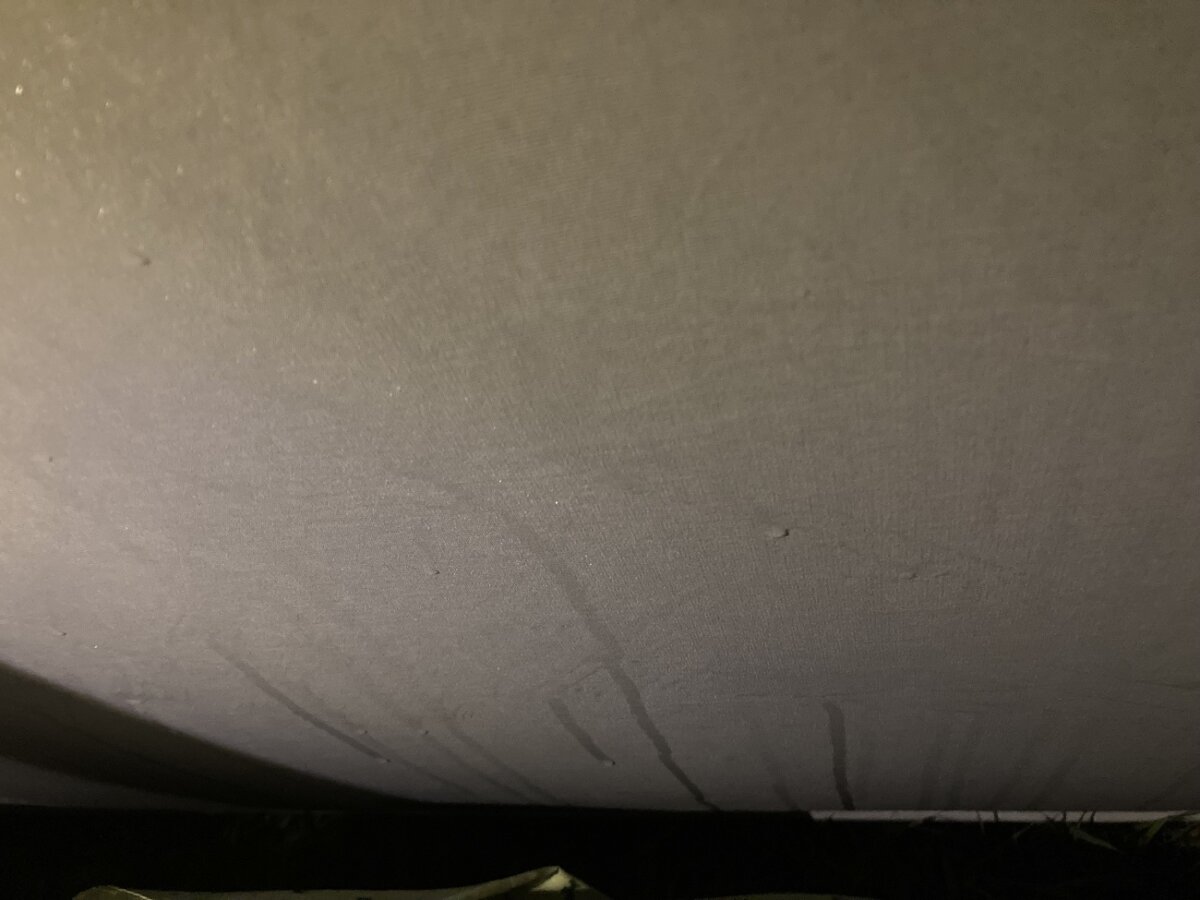
Water drips from the ceiling. It's not condensation. However, just like condensation, it is best to wipe it off frequently if you notice it.
Do you have trouble with insects coming in at floorless shelters?
"Insects can inevitably come in. The solution is to first reduce the amount of time you light up inside the shelter as much as possible. In Japan, there are relatively few insects in places over 1500m or above the forest limit, so I think it's a good idea to use them in such places.
I've put a lot of emphasis on light weight over comfort, so I've been thinking that mosquito nets are unnecessary. However, I've also experienced insects that I've been troubled by insects. This is a solution I came up with at the time. This was when I went on a hike in New Zealand for about a week. In New Zealand, there are insects that you have to be vigilant when camping. They are small flies called "sandflies", but they are extremely troublesome, and they become very itchy when sting. Having obtained this information in advance, I decided to look for a pharmacy after arriving at the site and bring a powerful insect repellent spray called "Bushman" (insect-repellent ingredient: about 30% Deat).
When I was in the tent, I was in trouble because a lot of sandwich fries came in. One day, out of curiosity, I tried pouring a bushman directly onto the sandwich fries that were stuck inside the shelter. Then the sandfries died and fell apart, as if they had been exposed to insecticide. After seeing this, I hanged the bushmen all the way across the shelter ventilation and the wall near the gap between the ground and the many sandfries that had been stuck to me up until then had been reduced to a great extent. ”
I think this is a place where you can use the floorless shelter alone. When used in low mountains or low-lying campsites in the summer, there are quite a few battles awaited depending on the location (bitter smile)
In such cases, insect repellent measures are essential, and specifications may change in the future and options may be made.
When using in high mountains, there are many cases where you don't have to worry about it.
And Kitamura's final answer to the above question
"The questions mentioned above also reverse the ease of setting up and withdrawing floorless shelters. You need to ask yourself where you're focusing on these things.
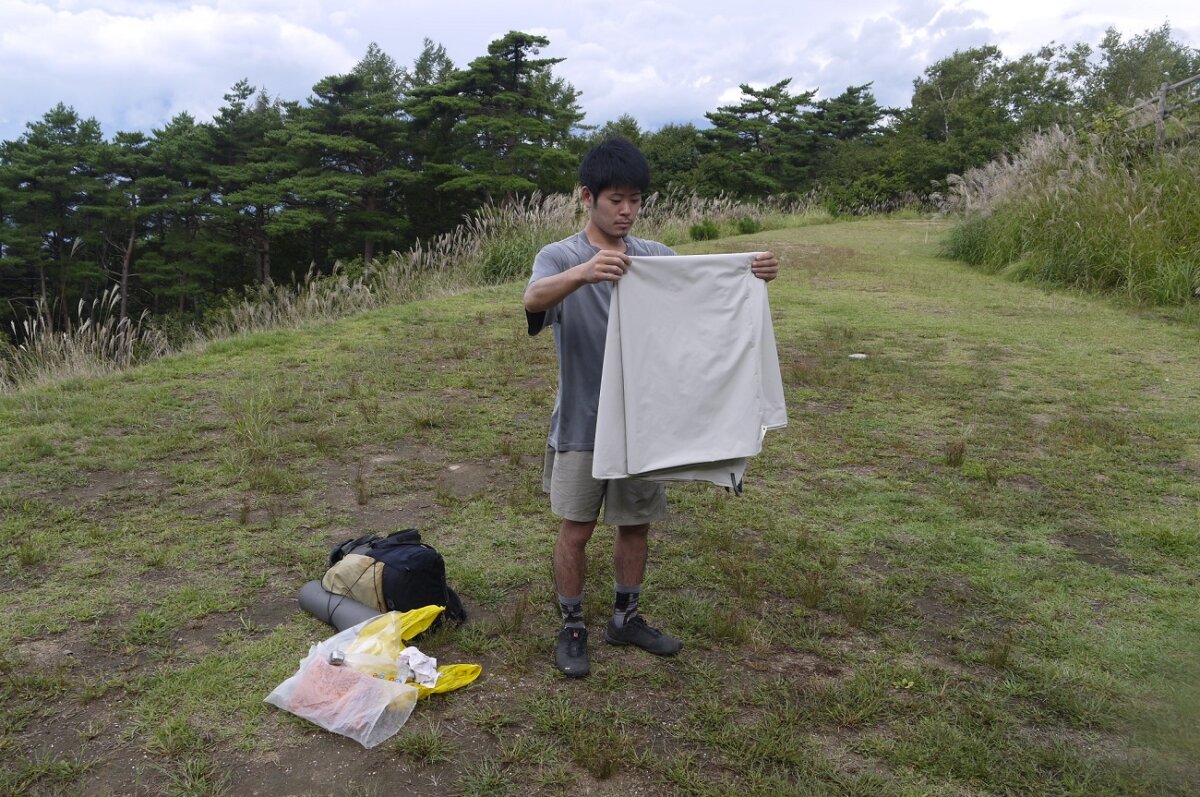
It is thin and compact, so you can store it like you're folding clothes. Perhaps this shelter is the true essence of being able to withdraw more quickly than set up?
Most of the lacking things can be solved by ingenuity, and I think it's fun to think about it yourself and use things well. If you put on a variety of parts and do everything, you might end up not coming up with a good solution or panic when something unpredictable happens, such as breakage.
Playing in nature involves risks and risks, and I believe it is very important to view yourself objectively and accurately grasp the surrounding situation. Not only does your backpack contain your own experience, knowledge and ideas, which are very important and lightweight tools. With this in mind, Backpacking Shelter leaves some space for users to use their brains. ”
Here is the Kitamura style of subtraction aesthetic.
Next, I would like to dig deeper into Kitamura from CLASS EXPOSITIONS.
The origin of the name CLASS EXPOSITIONS
"The story goes back to the cultural festivals in my high school days. At that time, we forgot about our studies and club activities, including class matches and class-by-class choir festivals at school festivals, and the teachers worked together. What
I was particularly passionate about the Class Exhibition . Each class uses their own classrooms to create a space by displaying what they've researched about haunted houses and school trips. Our classmates have been discussing for a while, saying that when they become third graders, they want to hold an exhibition with a space theme. As
the preparation period was in progress, we thought, "Let's create a booth where we can experience a zero-gravity space." At that time, I was so excited that I searched for information on the internet that I found something called "Space Tube." It involves sewing elastic fabric into a tubular shape that can be put in a person, and setting it up using a rope using a structure such as a gymnasium. It is a device that allows you to experience a special experience, as it is stretchy so that when you enter it, your body lifts up and gives you a floating feeling.
One of my classmates emailed the organizer to help. Space Tubes are copyrighted works and we were unable to make them ourselves, so we almost refused our cooperation, but since it was an indispensable part, our friends ended up taking over and eventually volunteering to come to set up Space Tubes.
I used to scatter fluorescent paper pieces onto black vinyl sheets for agricultural use and shine a black light to create a space that looks like countless stars are shining. The story is about a space journey.
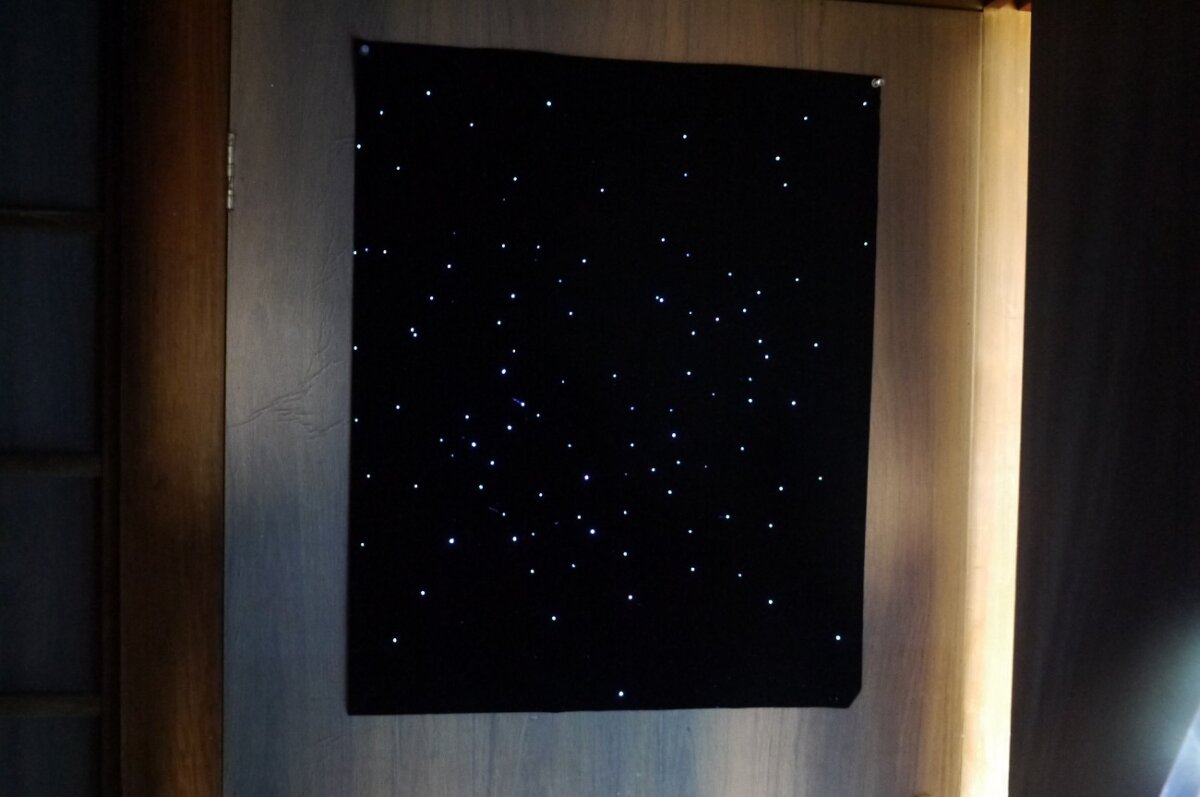
I feel like I saw the origins in the installation (※) of the stars displayed in the atelier and the story of the school festival.
I was a little unresponsive on the first day of the school festival, but with advice from my homeroom teacher, I reversed the entrance and exit, and the flow of the production improved and I was able to get a response. As a result, our class exhibition won the top prize.
And I believe that what drives me is to create an exciting space with my friends, just like I did in high school. What should I make next? What will I be most impressed with? What kind of work should I work on in my life? I think it took about four months to write down and organize my thoughts on paper many times. No matter how many times I think about it, I ended up coming to realize that things that impress people and that I am the most excited about creating spaces. For this reason, I decided to use the name of my activity as CLASS EXPOSITIONS = class exhibition. ”
CLASS EXPOSITIONS wasn't just a brand name, but also Kitamura's activities themselves and the name of their activities. Therefore, that creative thinking goes beyond just creating outdoor gear.
Starting shelter production and the journey to Backpacking Shelter
"I was in Nagano until I left high school, so I often went mountain climbing for school events and went mountain climbing with my parents, so I could say that living with mountains is a commonplace everyday life. From then on, I started to become quite aware of the mountains once again when I left my hometown and attended a university in Kansai.
I've lived a life surrounded by mountains since I was a child, so I can't help but feel that there are not many mountains in Kansai. That seems like a light culture shock, and I think there are more and more people are pursuing mountains and nature. At that moment, I learned about UL and became absorbed in ideas such as long distance hiking, UL gear, and Zen.
From around March 2018, when I was a senior in college, I started collecting my own mountain tools and from that time I started making carbon poles for floorless shelters. That summer I walked around the Northern Alps by myself, and by the time I walked around Mt. Gotatet in August with my father, I bought some Dyneema fabric, and at the end of September I brought my own tent to Goshikigahara as a sub.
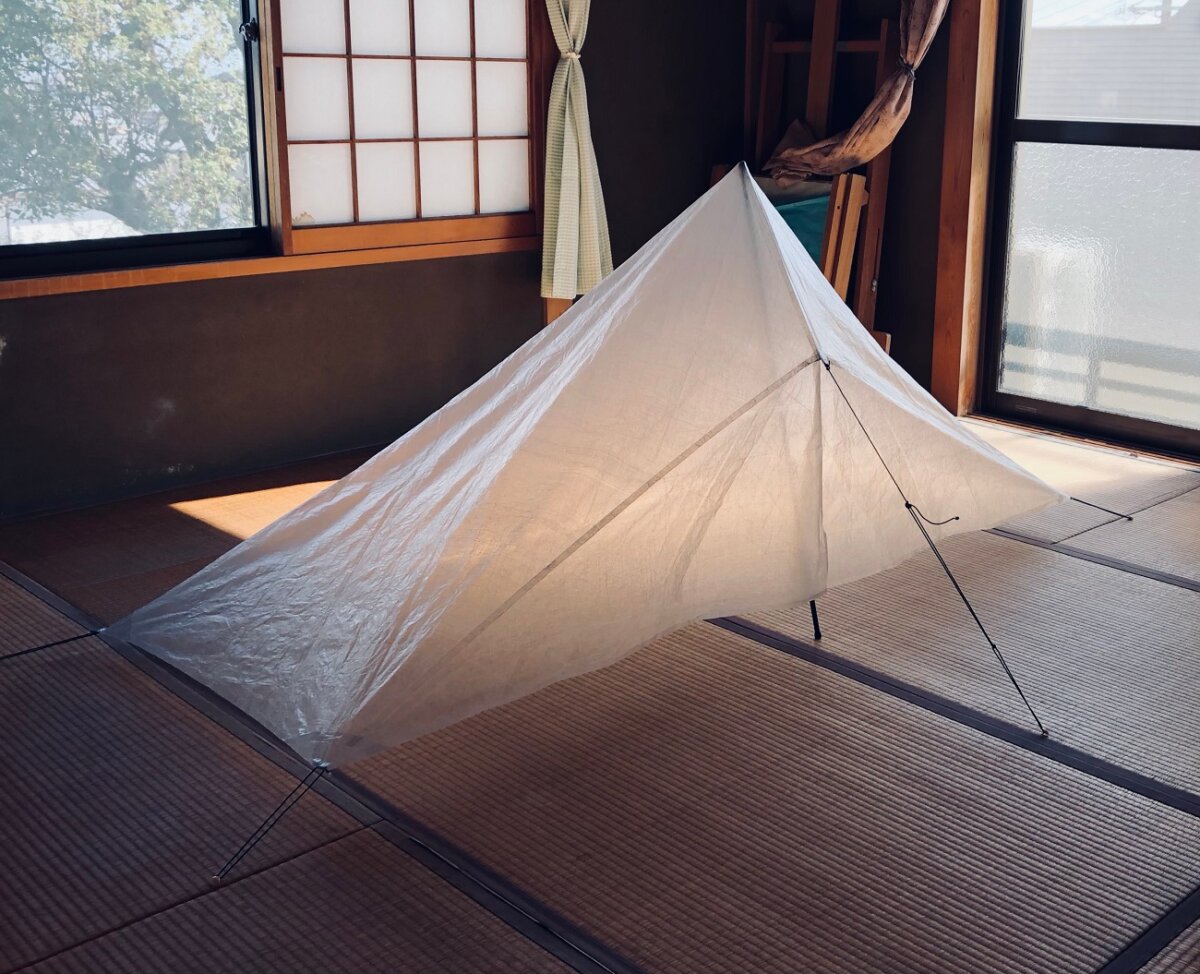
Kitamura's first DCF tent.
They retreated early due to the typhoon approaching, so they never went to camp in that tent, but after graduating from university, they obtained Dyneema + moisture permeable membrane fabric and created a wingper-shaped tent that will become the prototype of the product. Since then, I have sometimes used ready-made shelters, but I have been making adjustments to take my own tents into the mountains and use them. ”
"In 2020, I spent the season in a mountain hut and never went out to the mountains myself, but in 2021, I started living alone in Osaka and bought a new Dyneema fabric in original colour. I made a tent and walked around the Southern Alps. At that time, the opening was fastened with a Fidlock magnet, but I couldn't get the appearance I imagined, so I ended up making improvements by adding curves to the Dynee Meibent tent I had previously made, replacing the zipper.
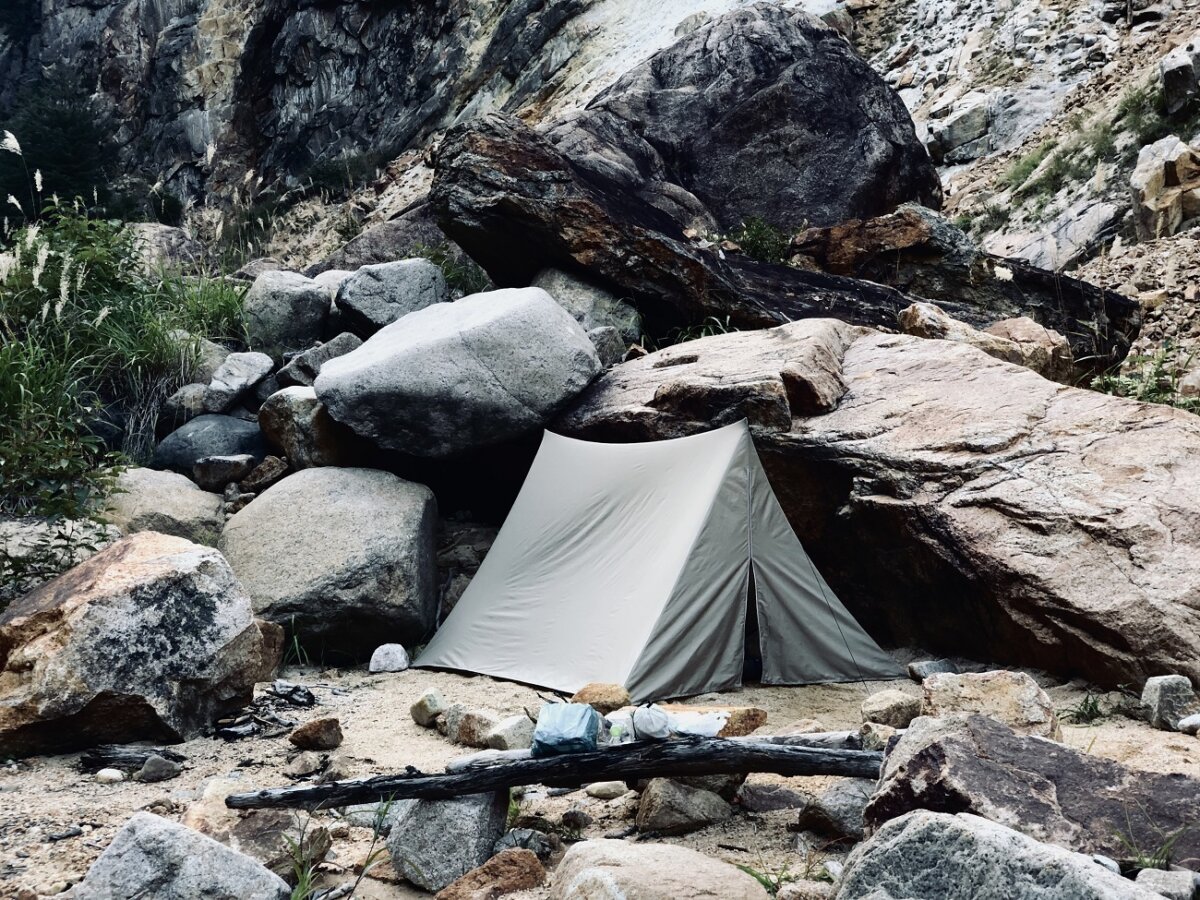
This is a prototype from among many patterns.
In August, I headed to Tateyama with a friend who had been transferred to Toyama from Oritate and brought the improved tent with me. The final form was then made by adding catenary curves to all sides except that they were in contact with the ground before heading for the Shinetsu Trail just after extension, and the distance between the zeniths was shorter than the floor length. This was the finished product and then I looked for the same fabric, but it was nowhere to be found. When I contacted the manufacturer that uses the fabric or the fabric website, the production was discontinued... I ended up choosing the fabric and starting over again. Later they came across domestic three-layer hardshell material, and the Backpacking Shelter was truly complete. ”
The journey to completion of Backpacking Shelter is not easy, but is the result of many twists and turns.
The beginning of Kitamura-san and CLASS EXPOSITIONS.
"After going to university, I moved to my parents' hometown of Kansai, and after graduating from university, I got a job at a regular company. However, after about six months I started to feel something was different. Once I had joined a new department, I simply didn't know what to do. From there I started thinking deeply about work, but around that time I started to contact someone I was close to in high school. Then I talked about mountain climbing and they said I wanted to go, so I went to Tanzawaya in Kanagawa with me.
It's been a while since I met him and talked about work, and he introduced me to a certain book. That changed my life. When I read it, I found that what I was feeling deep inside was written down, and my thoughts suddenly shifted. And change your way of life! I decided to quit my job. ...However, I didn't really know what to do, so I worked part-time at a mountain hut at a mountaineering store, then worked part-time at a mountaineering equipment store and continued to create and test shelters. ”
"At that time, the person I worked with at the shop where I worked at my part-time job moved to Nagano and started a mountain equipment shop! He said he wanted to handle my tent. From there, I started preparing for the event exhibition and making it public in earnest.
Until then, I felt a little depressed. I really didn't like the gap between my ideals and reality, or the feeling that I couldn't accept myself. However, I didn't have the courage to start running all at once, and I wasn't satisfied with what I was making. As I mentioned earlier, I would make a tent and use it in the mountains, collect data, etc.
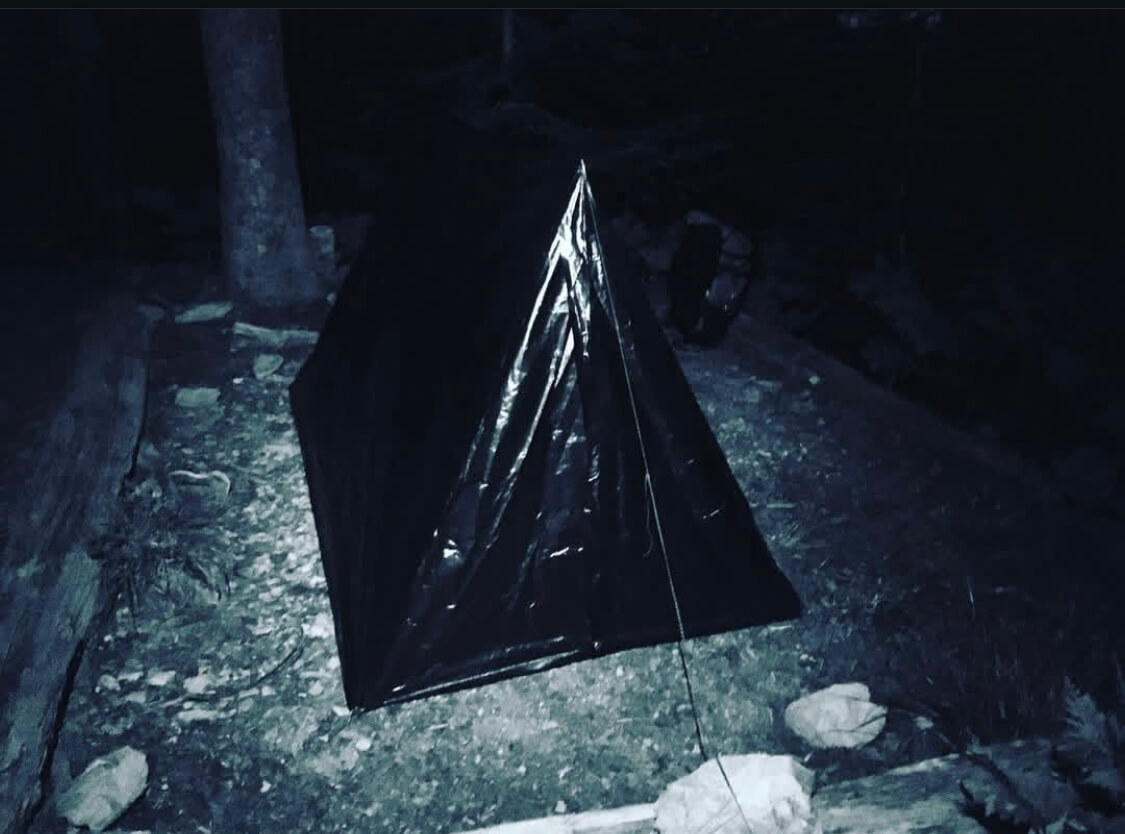
Again, from a prototype. The material challenges range from DCF-event, DCF, water-repellent ripstop and water-repellent taffeta.
After that, I spent my days searching for materials and communicating with various places to arrange them.
At that time, my father, who had been in the hospital for about a year, passed away. Strangely... I felt that my presence would become bigger after I disappeared, and that my father seemed great. I look at my father's old albums, travelogues, paintings he painted when he was young, and recall stories of when he first started a pension and my own vague memories of that time...I feel like I've been pushed for him.
I think they made it a situation like that: ``Live your life.'' I gradually became more prepared to concentrate on my own, and began to announce my tent and begin full-scale activities at CLASS EXPOSITIONS. In July 2024, I moved to Nagano Prefecture, a more innate home to the field, and am working hard to create things while preparing the production environment. ”
In this way, the story of CLASS EXPOSITIONS, which is still evolving, continues.
And the latest news on Kitamura and CLASS EXPOSITIONS...
"We have posted an image of a prototype model called "vertebrae" in the shelter's idea stage. We are currently considering two other models. In other product designs other than shelter, we are also planning on clothing and accessories to wear.
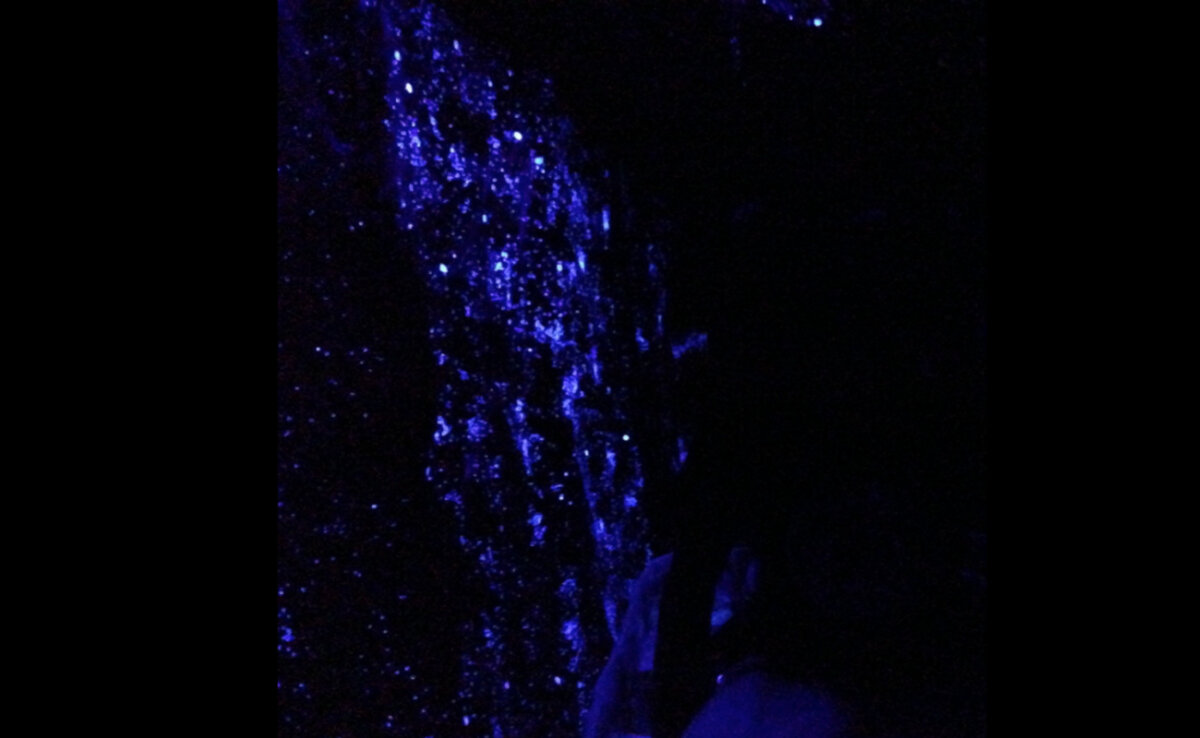
I'm also looking for a place to hold a solo exhibition of Star's Installation (※) this year. ”
There are only words that interest you!
The current purchase method for Backpacking Shelter from CLASS EXPOSITIONS is achieved through various ordering methods, and from dealers or websites. The main unit and storage bag only cost starting from 54,000 yen excluding tax. The dedicated carbon pole is a set of two, and costs 14,000 yen excluding tax.
Currently, only four stores in Nagano Prefecture carry this store, and there are also the names of the shops that I helped with during my visit to Giajin!
The Backpacking Shelter permanent exhibition will be available only by itomizu (may not be set up for events, etc.), and other stores are renting out samples, so you can actually pick them up and check them out at the physical store.
Stores, all Nagano Prefecture
・Daily progress (Chino City) https://www.instagram.com/nissin_geppo2023/
・HIKE (Haramura) https://hikeyatsugatake.com/
・itomizu (Matsukawa Village) https://www.instagram.com/itomizu_official/
・Eightdoor (Chino City) https://eightdoor-chino.com/
You can also order from the official website https://www.class-expositions.com/
The usual color available is "white lacquer," and in addition, they plan to create custom colors in collaboration with each physical store.
The next CLASS EXPOSITIONS will be closing, and we are currently pursuing the full-time, two-day record and Backpacking Shelter itself, so please continue to support us!
*What is an installation?An interpretation of Kitamura's style.
Generally, installations are "conceived by organically linking the work to the environment where it is displayed, not as a single piece, but rather by presenting the totality as a single artistic space. That space again. ' (from Kotobank), and Kitamura himself interprets it as follows:
"I recognize the term installation as a work of art that is large enough to encompass people who view them. And my point of view is that shelters can also be called installations in terms of "encompassing people." That's why I create shelters that focus on the beauty and details of their sculpture. I want to create things that are not just as mountaineering equipment and tools, but also something that has an appeal that resonates with sensibilities."
Yans
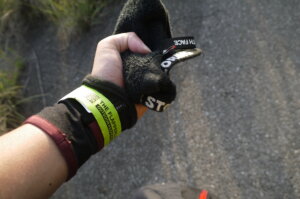 A person who has grown into a gear lover and finally ended up writing on Gear Gin. He has been a tough gear enthusiast and loves modifying and making his own gear, and also loves outdoor events. We would like to place emphasis on brand exploration and shop reviews.
A person who has grown into a gear lover and finally ended up writing on Gear Gin. He has been a tough gear enthusiast and loves modifying and making his own gear, and also loves outdoor events. We would like to place emphasis on brand exploration and shop reviews.


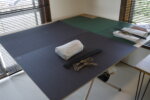 [Backpacking Shelter] Record of a two-day trip with CLASS EXPOSITIONS, one-night trip with Kitamura, Part 1 [Garage brand visit]
[Backpacking Shelter] Record of a two-day trip with CLASS EXPOSITIONS, one-night trip with Kitamura, Part 1 [Garage brand visit] [Backpacking Shelter] CLASS EXPOSITIONS Record of two-day trips with Kitamura, after (camping site) edition [Garage brand visit]
[Backpacking Shelter] CLASS EXPOSITIONS Record of two-day trips with Kitamura, after (camping site) edition [Garage brand visit] [OGZ's Yamato Town Exploration Story Vol. 12] Nagano Chino Edition: The gateway to Mt. Yatsugatake, the place to go, the mountain tools and cafe Eightdoor!
[OGZ's Yamato Town Exploration Story Vol. 12] Nagano Chino Edition: The gateway to Mt. Yatsugatake, the place to go, the mountain tools and cafe Eightdoor!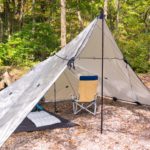 One-of-a-kind. The FIELD RECORD FR-shelter, a free-to-match and transform tarp shelter, tickles too much playfulness
One-of-a-kind. The FIELD RECORD FR-shelter, a free-to-match and transform tarp shelter, tickles too much playfulness